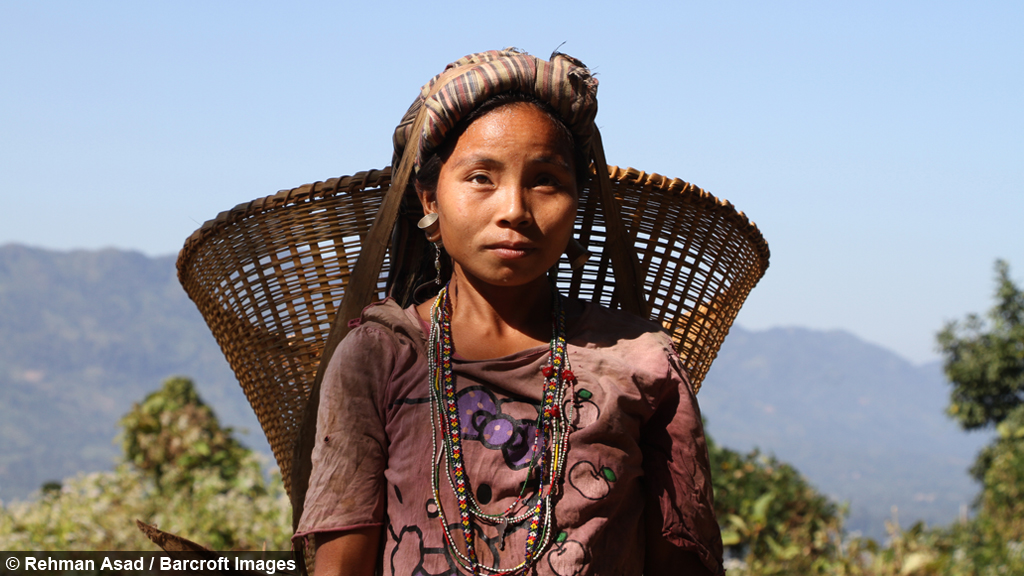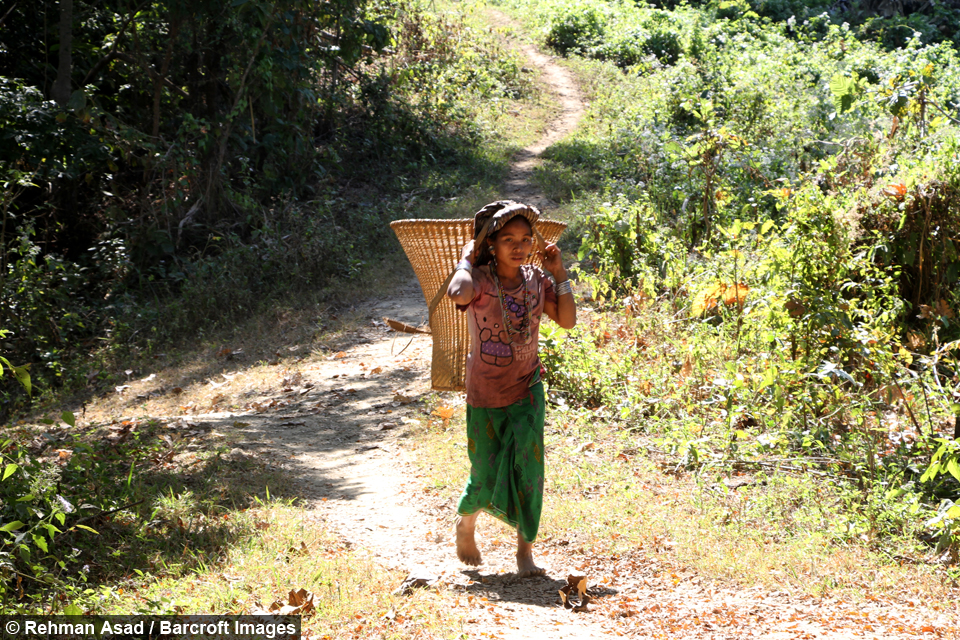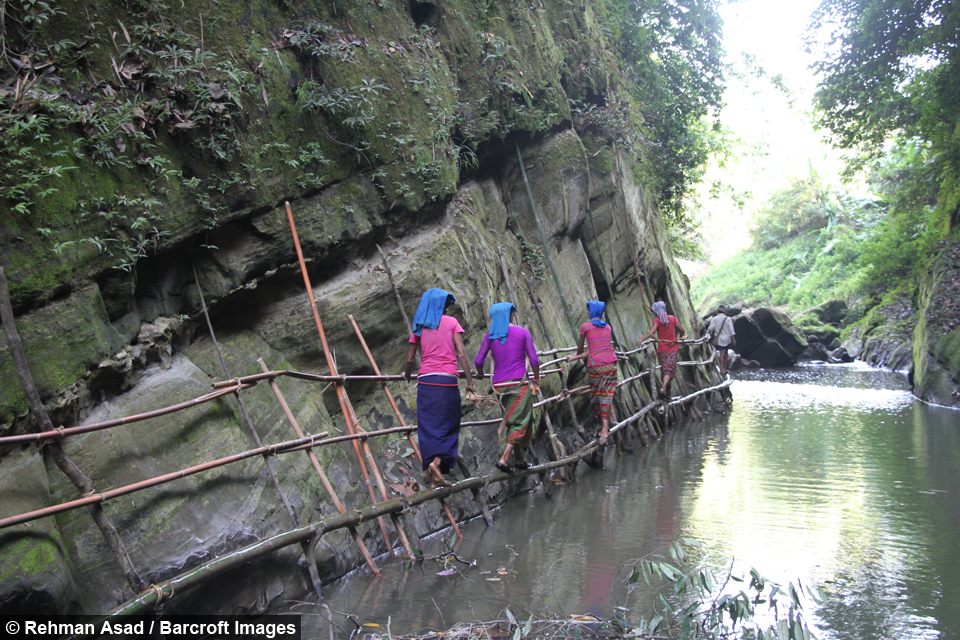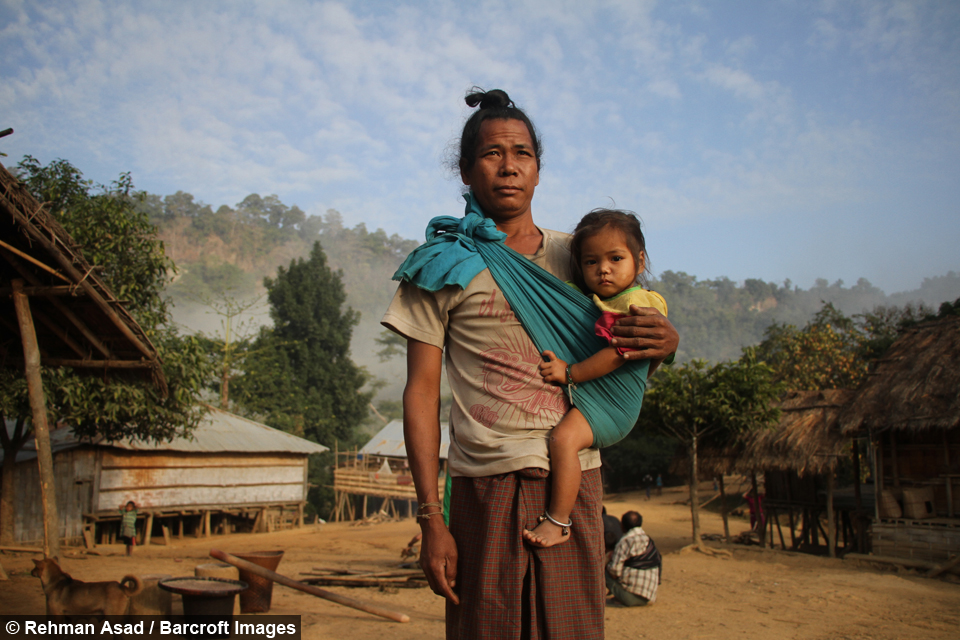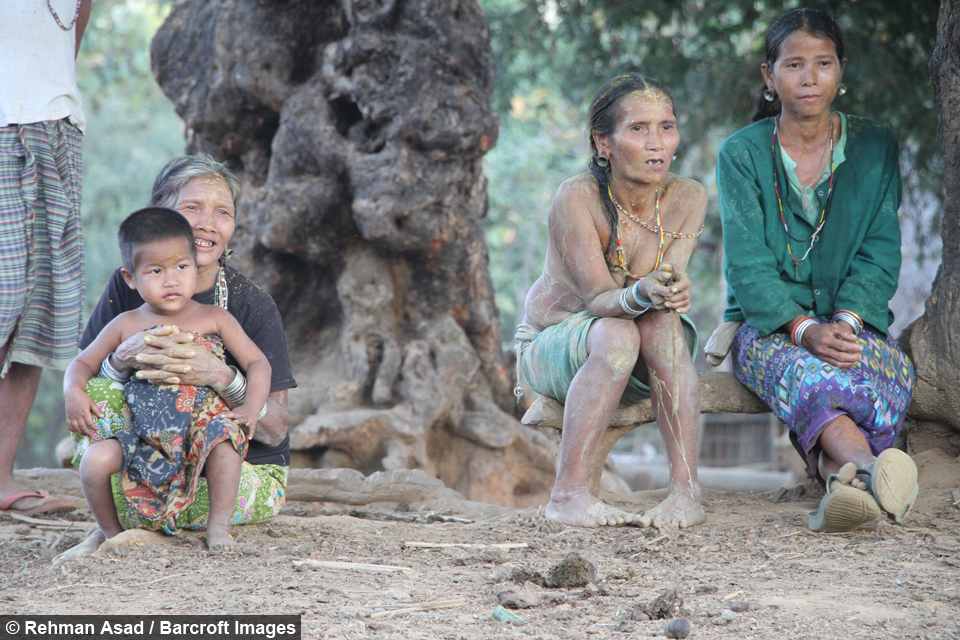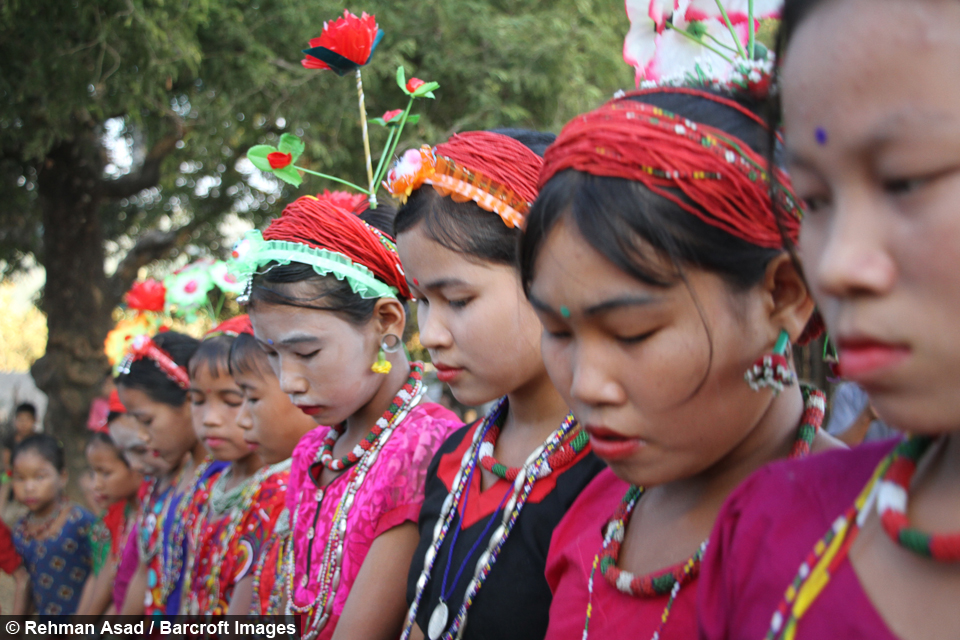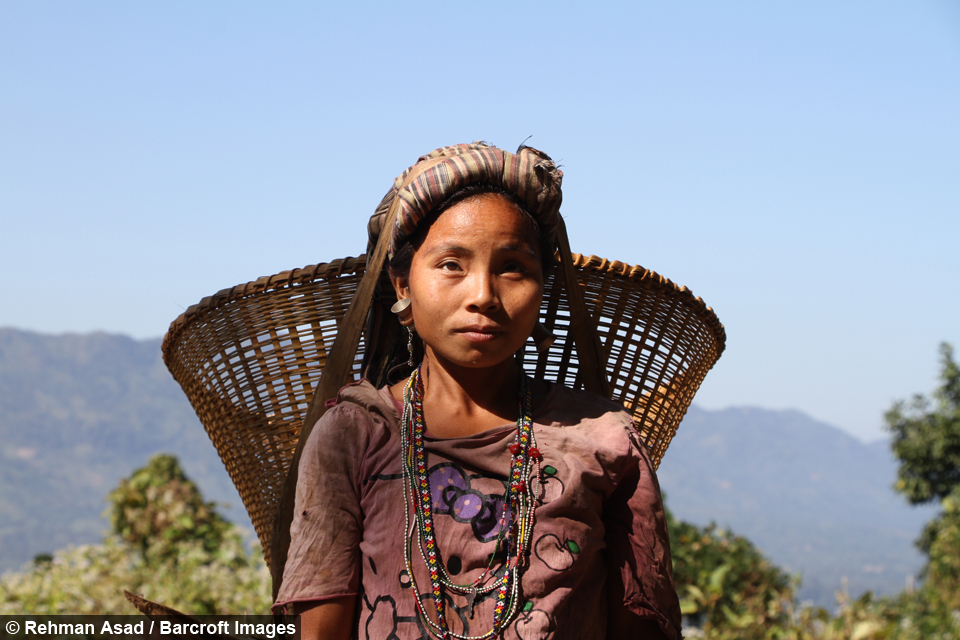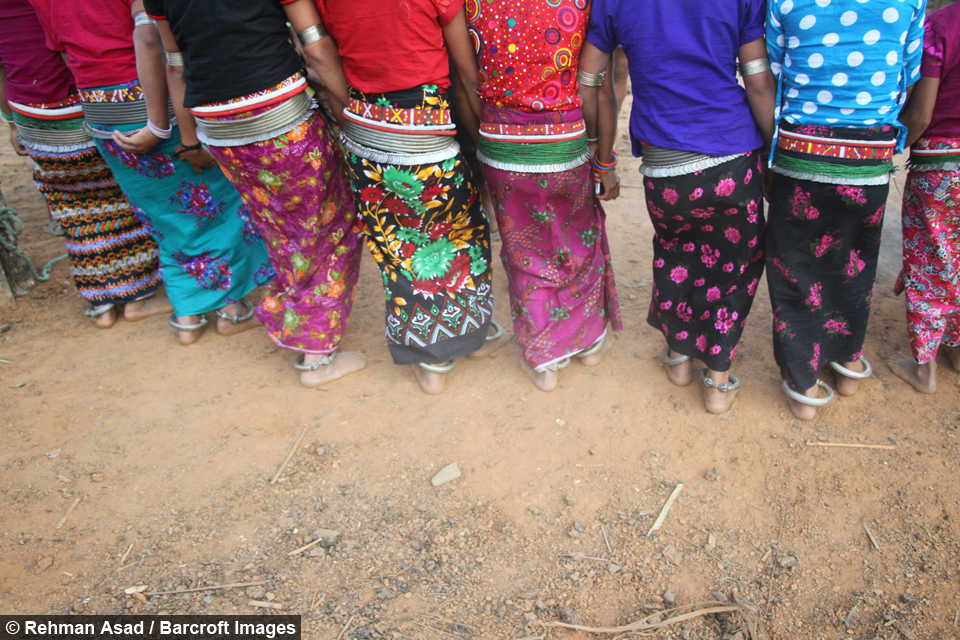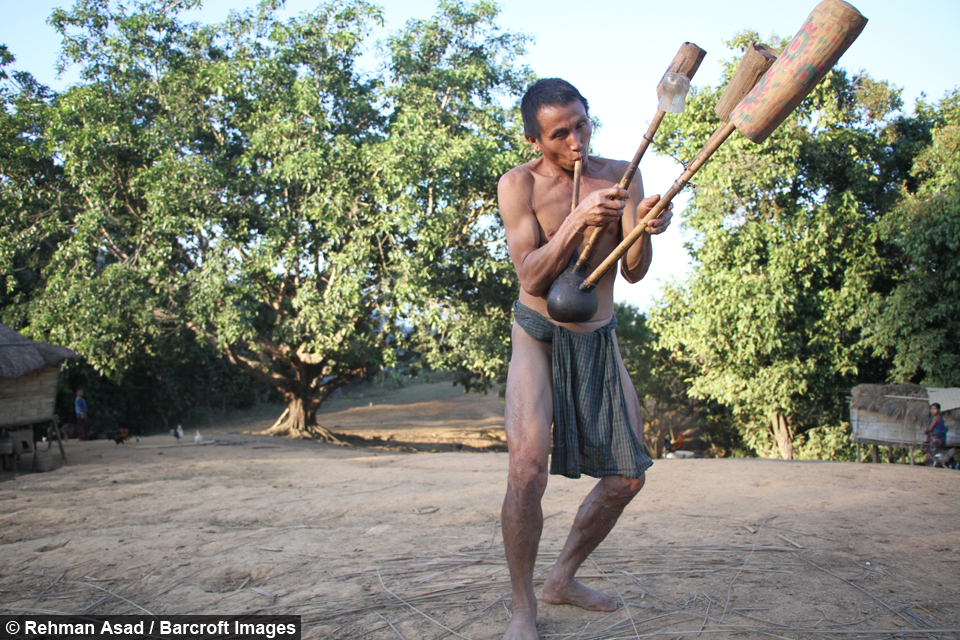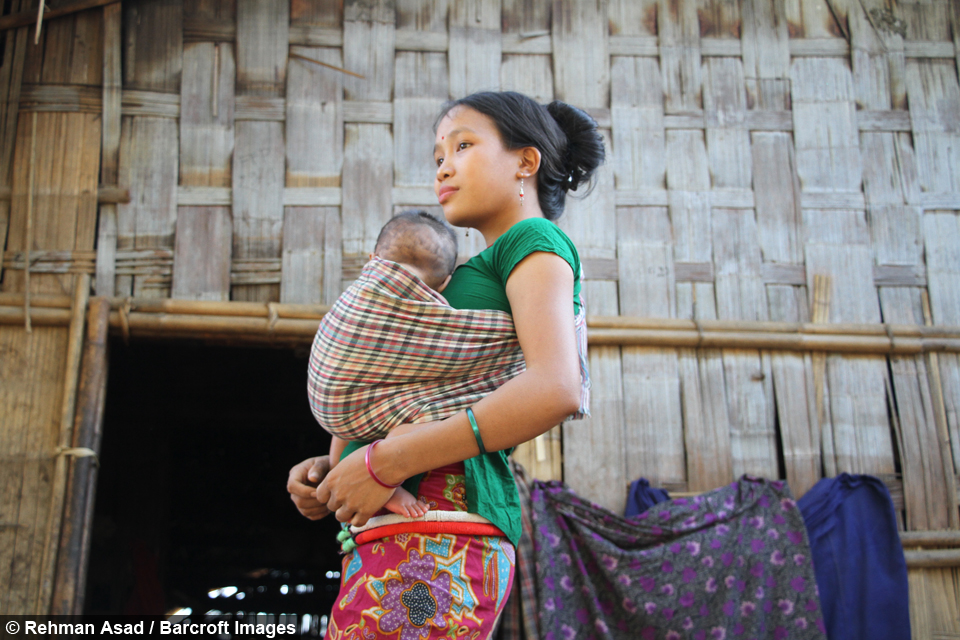Meeting Bangladesh's hidden tribes
By Hannah Stevens @Hannahshewans
Scroll down for the full story
Photographer Rehman Asad spent his New Year’s Eve and the start of 2017 travelling from Dhaka, Bangladesh to the Bandarban district in south-eastern Bangladesh to meet some of the isolated tribes living in the hills.
Accompanied by a tribal friend, Rangching Mru, he visited five tribal villages called Chakmapalli, Tangkhang Para, Chomipara, Rengdompara and Paddamukh. Eleven indigenous ethnic groups remain in the region including the Mru, Marma, Tripura, Chakma and Pangkhua.
He said: “Their homes were made by bamboo and woods on hilltops, locally known as Machang Ghar. Every house has three or more rooms and a little balcony in front of the house.
“Those rooms are used for beds, kitchen, store room and guest room. They have no furniture and no electricity. Some people use a small solar panel for using lights.
“They usually cook rice, vegetable, animals, nappi - a special item for them made with dried fish. They don't use spice or oil for cooking.
“They sleep on the ground of the house using a simple home made mat as a bed. They sleep together.”
Before capturing the indigenous peoples on camera Rehman secured permission from the lead member of each tribal group.
While visiting a small Mru village called Chomipara, Asad witnessed the indigenous group prepare to celebrate the Kumlang festival, which is local known as Chia Sad Poi.
Before the harvest the Mru community arrange the festival to pray for plentiful crops in the upcoming year and the community eat, drink, dance and eat to mark the occasion.
He said: “The Mru, also know as Murong, are another tribe that lives in Lama, Ruma, Alikadam and Thanchi upazilas near Chimbuk Mountain of Bandarban district, who are famous for their music and dance.
“In major numbers the Mru have converted to Khrama - or Crama - the youngest religion in Bangladesh which prohibits much of their old ways.
“They are assumed to be the original inhabitants of Bandarban. Most Murongs are Buddhists and some are Christian converts.
“In general, however, they are still animists and they worship nature. They revere Thurai as the creator of this universe. All their pujas - acts of worship - are directed to Oreng, the God of the household and day-to-day business affairs.”
While men drank homemade beer and prepared bamboo flutes for the festival, the women prepared to dance in their colourful traditional dress and matching ornaments.
In the afternoon, members of the village gathered around a cow and performed their songs and traditional dances - after a short time a man killed the cow using a spear.
However, the revelry of the festival was short-lived and the villagers soon returned to their busy day-to-day life, which Rehman says is deprived of education, healthcare and the basic needs of modern life.
The Dhaka-based photographer said: “I hope when people see my images they will learn about the indigenous peoples lifestyle, culture and the hard struggle of their lives.”
Most of the villagers Rehman met could not speak Bengali so he relied heavily on his companion to translate, however, he did observe the tribe’s conformity to traditional gender roles.
Rehman said: “Men do little work regarding the family. They mainly hunt animals to eat from the hill.
“Women work hard; they collect water from the hill stream, river and lake early in the morning and then cook food. They do all the household work.
“They go to the hill to cultivate crops, locally know as Jhum Chas and they collect woods from the hill.
“Children stay home and play with neighbours. They have no educational institutions so they are deprived of the light of education.”
